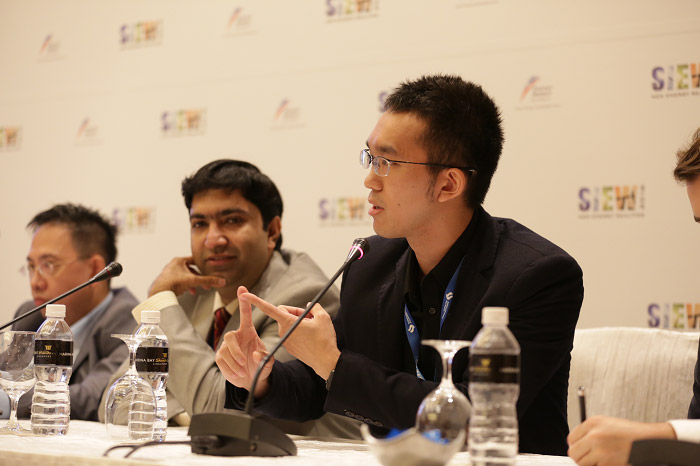
By Ong Yu Hui
Emerging information and communication technologies (ICT) are providing opportunities to integrate disparate energy systems and allowing industry to monetise their assets through optimisation, said Dr Sanjay Chittaranjan Kuttan, Program Director of the Energy Research Institute @ NTU (ERI@N), during a roundtable on “Smart Multi Energy Systems: Challenges and Opportunities” at the Singapore International Energy Week (SIEW).
Buildings is one key area where integration and optimisation of energy systems provide huge potential in energy savings, said Jimmy Khoo, Managing Director of Singapore District Cooling. Air-conditioning contributes to more than 50 per cent of the energy consumption in office building in Singapore, explained Keiichi Katajiama, Senior Researcher at Hitachi, as he demonstrated that potentially 5 per cent of this energy can be saved during the rainy seasons, using simulation-based optimisation technology on chiller plants.
Data is a huge enabler in energy efficiency in buildings through monitoring, control and optimisation of energy systems, said Rohan Rawte, Head of Asia Operation at IESVE. He shared a case study on six selected buildings in Glasgow City where estimated energy savings of $450,000 can be achieved by using advanced data analytics to identify areas where energy efficiency can be improved.
Machine learning in particular can be deployed in many areas to better value extraction, said Henrik Bache, Managing Director of eSmart Systems in Asia. Besides load forecasting, using machine learning to predict grid outages could be increasingly important in the future when the integration of renewables present higher risk of such occurrences.
That said, mining insights from data can be challenging, said the panellists. One of the key challenges is accessing and storing quality data in the right format. Many valuable data is currently generated outside of current legacy data systems which are unable to handle the huge volume of data, the panellists added.
Data must be presented in an easily understood manner to ensure all stakeholders in the value chain are able to understand where the bottleneck is, and be able to take action to save energy in an effective way. Ted Chen, co-founder and Chief Product Architect at Evercomm, emphasised that the process to achieve this is not straightforward and end users should be educated to progress step by step to drive actions.